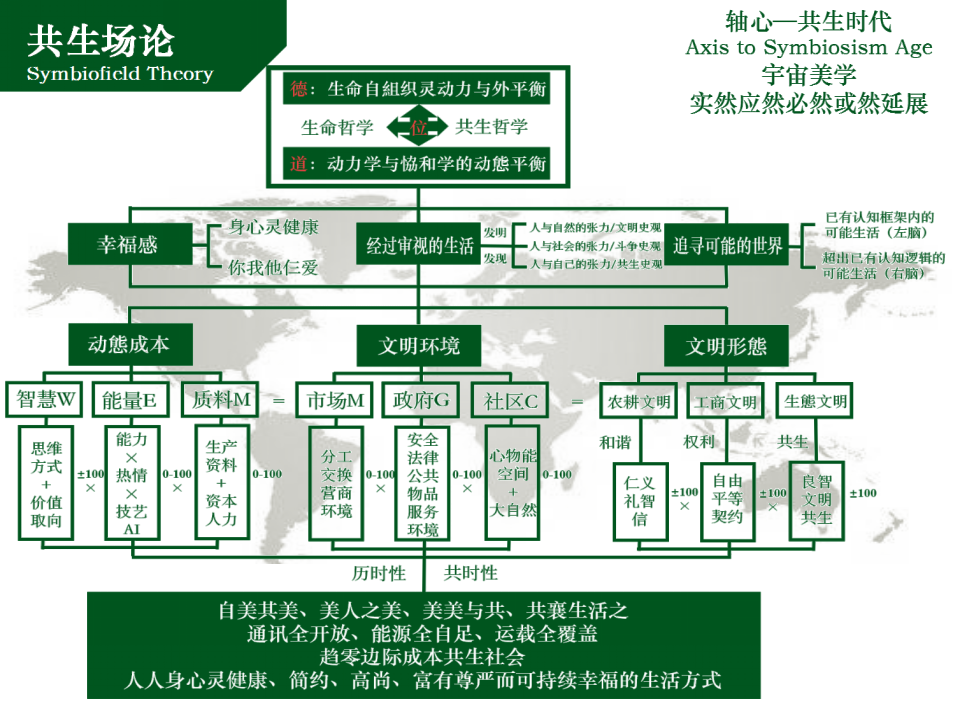Reaffirming “The Third Path to Ending the War in Ukraine”
— Written After the U.S.-Led 50-Nation Ramstein Aid Conference for Ukraine and the U.S.-Russia-Ukraine Presidential Calls
By Archer Hong Qian
Intersubjective Symbiosism Foundation
On February 12, 2025, Trump, Putin, and Zelensky’s Talks Spark Global Debate
On February 12, 2025, Donald Trump, the 47th President of the United States, held separate phone calls with Russian President Vladimir Putin and Ukrainian President Volodymyr Zelensky to discuss ending the Russia-Ukraine war. The discussions immediately triggered a media storm, with widespread commentary ranging from praise to outrage.
However, one crucial aspect was largely overlooked: while public discourse focused on selective interpretations of what the three leaders said, few took the time to understand the actual context, substance, and implications of their conversations.
I carefully reviewed the statements from all three leaders after their calls:
Trump-Putin call (90 minutes, with approximately 30 minutes for translation):
- Trump described the call as “long and highly productive,” covering not only the Ukraine war but also the Middle East, energy, artificial intelligence, and the influence of the U.S. dollar.
- Trump emphasized his goal to “stop the horrific casualties” in Ukraine and “immediately initiate negotiations”, proposing Saudi Arabia as the negotiation venue.
- Putin’s response differed slightly, adding that the “root causes of the conflict must be addressed.”
Trump-Zelensky call (30 minutes, direct in English):
- Trump called the discussion “constructive” and noted that “like Putin, Zelensky also seeks peace.”
- He stated that the main issues would be discussed at the upcoming Munich Security Conference on Friday, led by U.S. Vice President J.D. Vance and Secretary of State Marco Rubio.
- Trump concluded: “It is time to stop this senseless war of massive destruction and loss.”
Zelensky’s reaction:
- Zelensky reaffirmed that “no one wants peace more than Ukraine” but stressed the need for a coordinated U.S.-Ukraine strategy to halt Russian aggression and secure lasting peace.
- He also called for 100,000 international peacekeeping troops to ensure Ukraine’s long-term stability.
Trump’s Position & The Misconceptions
Trump’s primary goal is to halt the massive loss of life and destruction in Ukraine and move the conflict to negotiations. However:
- Negotiating does not mean making concessions to Putin.
- It does not mean Trump is betraying Ukraine.
- When asked whether he would stop military aid to Ukraine, Trump explicitly denied it, saying:
- “No, we are still providing support. If we stop, Putin will claim victory. We are preventing that from happening. I will continue as long as necessary because we will not let the opposite happen. But the good news is, President Putin now wants peace.”
Reiterating “The Third Path to Ending the Ukraine War”
As the spokesperson for the Intersubjective Symbiosism Foundation (Canada), I would like to restate the proposal I have repeatedly put forward in early 2024, first published in Culture China, Issue 118 (January 2024, Hong Kong) and online as “The Third Path to Ending the Ukraine War” (July 20, 2024).
1. A Two-Stage Withdrawal of Russian Troops from All Occupied Ukrainian Territories (Based on 1991 Borders)
- First stage: Russia withdraws from the four eastern Ukrainian regions occupied since February 24, 2022.
- Second stage: Russia withdraws from Crimea (occupied in 2014) and returns all abducted Ukrainian children.
- To ensure a safe withdrawal, Ukrainian forces and a European-led international peacekeeping force will guarantee Russia’s secure exit and maintain local order.
2. Special Protections for Five Disputed Regions & Their Potential Sovereignty
- To facilitate Ukraine’s reconstruction and eliminate future conflicts, Ukraine could recognize five disputed regions (including Crimea) where Russian-speaking populations exceed 95%.
- However, rather than merely promising “special protections,” Ukraine could allow these regions to become new sovereign states under strict international oversight (e.g., United Nations Trusteeship Council, UN Human Rights Council) and with international peacekeeping forces.
- This is not “trading land for peace” but ensuring sustainable, enforceable stability—since historical agreements, like the 1994 Budapest Memorandum, have proven unreliable.
3. A Political Counterbalance: The Sovereignty of Kaliningrad (Königsberg)
- As a geopolitical balancing act, Russia’s westernmost, non-contiguous Kaliningrad Oblast could also be considered for potential sovereignty under international oversight.
- The new state could be called the “Königsberg Republic,” in honor of its historical and cultural heritage, being the birthplace of Immanuel Kant (author of Perpetual Peace), David Hilbert (mathematician), and E.T.A. Hoffmann (writer).
4. A Trade-Off: Dropping Sanctions & War Crime Charges Against Russia
In exchange for implementing this peace framework, the international community could:
- Drop war crime charges against Russian leadership for the invasion of Ukraine.
- Unfreeze Russia’s remaining foreign currency reserves that have not yet been confiscated.
- Russia, a nation that has produced Lomonosov, Pushkin, Tolstoy, Mendeleev, Tchaikovsky, Andropov, Solzhenitsyn, and Yeltsin, must be allowed to rebuild.
- Ukraine and Russia must eventually establish a new mode of coexistence.
If Implemented, This “Third Path” Would Achieve:
1. A Permanent End to Russia’s Security Concerns
- It eliminates Russia’s pretexts for further European expansion.
- It offers Putin a necessary diplomatic face-saving exit.
2. Resolving Ukraine’s Internal Cultural & Ethnic Conflicts
- It addresses three major internal divides within Ukraine:
- Religious conflict (Greek Catholic vs. Russian Orthodox).
- Linguistic divide (Ukrainian vs. Russian speakers).
- Economic disparity (Developed West vs. Soviet-style industrial East).
- Ukraine could peacefully rebuild and allow eastern regions and Crimea to become small but prosperous states, akin to Switzerland, Belgium, Finland, Singapore, the Netherlands, Luxembourg, and the Baltic states—all successful models.
3. A Blueprint for Reshaping Global Security in the AI Era
- This approach could serve as a model for restructuring the post-WWII UN-based security system, providing a real-world precedent for a “Global Symbiosis Pact” aligned with ecological civilization and AI-era geopolitics.
Reference Material
This proposal is based on the “Flip the Limits, Awaken Symbiosis” framework, which outlines five strategies for ending human wars:
- Five Ways to End Human Wars
- Appendix Reference: “The Third Path to Ending the Ukraine War”
- Archer Hong Qian, Intersubjective Symbiosism Foundation
🔗 http://symbiosism.com.cn/9023.html
Conclusion
The end of the Russia-Ukraine war will redefine global order. The Intersubjective Symbiosism model proposes a balanced, enforceable, and sustainable peace plan that prevents further bloodshed, reconstructs Ukraine, and reshapes international relations for a new era.






















您好!请登录
已有0评论
购物盒子